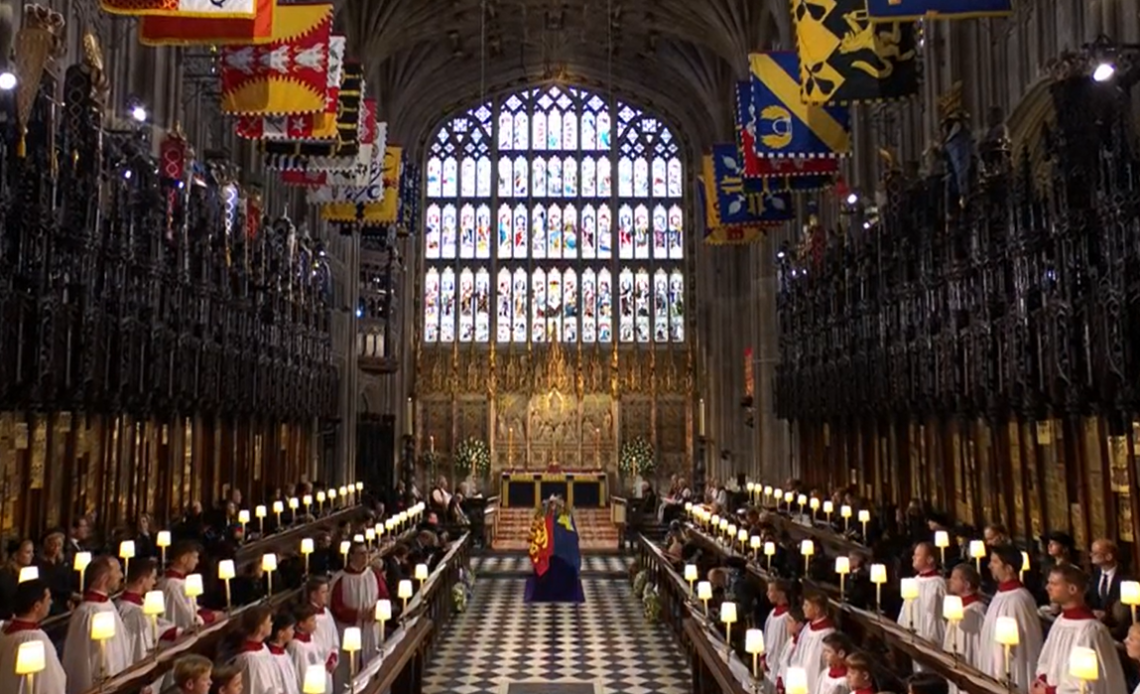
When French President Emmanuel Macron visits the United Kingdom next week, a particularly poignant event on his calendar will be visiting the tomb of Queen Elizabeth II to pay respects and lay flowers at her grave.
The world watched as Britain’s longest-reigning monarch was committed to the royal vault at St George’s Chapel, but where is the tomb of Queen Elizabeth II?
Queen Elizabeth II rests in a chapel she specially commissioned 60 years before her death.
In December 1962, Queen Elizabeth II directed her Private Secretary to write to the Dean of Windsor with two requests: that he begin planning then-Prince Charles’s confirmation; and that a permanent resting place be commissioned for her late father.
King George VI died suddenly on 6 February 1952 and his remains were placed in the royal vault at St. George’s Chapel following his funeral on 15 February.
Among the monarchs buried at St George’s Chapel are King Henry VI; King Edward IV and his consort Queen Elizabeth; King Henry VIII and his favourite wife Jane Seymour; King George III and Queen Charlotte; King George IV and his daughter, the would-be queen who predeceased him, Princess Charlotte; King William IV and Queen Adelaide; King Edward VII and Queen Alexandra; and King George V and Queen Mary.
A majority of them were laid to rest in the royal vault, though chapels had been erected for others. A lack of space meant that King George VI did not have a permanent resting place.
For the next 10 years, his coffin remained in the royal vault. His daughter wanted to change that, and in the letter from her Private Secretary, she requested a simple burial plot be constructed.
For the next five years, there was no work completed on this task, with the reason given that Queen Elizabeth II wished to spare her widowed mother the grief of having to bury her husband twice.
In the late ‘60s, work began on the King George VI Memorial Chapel. It would be the first addition to St. George’s Chapel since 1504, when a chantry was constructed for Oliver King, the Private Secretary of Henry VII. The Queen privately paid for all aspects of its construction.
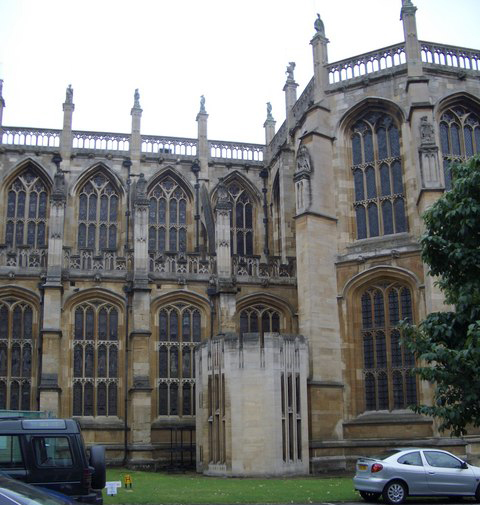
The first design had been rejected by the Royal Fine Arts Commission, but the second, by George Pace, was approved. He designed a chantry chapel to fit at the north wall of the quire between two external buttresses. A red-and-blue stained-glass window let in sunlight; the roof was painted black and white and featured embedded gold leaf; the altar held a bronze relief of King George VI designed from a portrait that hangs at the Church of St Mary Magdalene on the Sandringham Estate.
Queen Elizabeth II was said to dislike the marble above-ground effigies and tombs that were popular amongst the monarchs of centuries past and requested that a stone slab cover the coffin, which would be lowered into the ground. The depth of the King George VI Memorial Chapel is 14 feet.
On the wrought-iron gates at the entrance of the chapel is inscribed a poem King George VI quoted in his Christmas Message of 1939: “I said to the man who stood at the gate of the year: ‘Give me a light that I may tread safely into the unknown.’”
On 24 March 1969, King George VI’s remains were moved to the King George VI Memorial Chapel and re-interred in a private ceremony. At the end of the month, the chapel was dedicated in the presence of his widow, Queen Elizabeth The Queen Mother, his eldest daughter, Queen Elizabeth II, his son-in-law Prince Philip, Duke of Edinburgh, and his two eldest grandchildren, then-Prince Charles and Princess Anne.
The late king rested alone for just shy of 33 years before his youngest daughter, Princess Margaret, Countess of Snowdon, and his widow joined him in eternal rest.
Princess Margaret, who’d been in poor health for years due to the effects of several strokes, died in her sleep on 9 February 2002 at King Edward VII’s Hospital in London. Her funeral was held on the 50th anniversary of her father’s in the same location: St George’s Chapel. Unlike the rest of her immediate family, her funeral service was not broadcast live. She became the first member of the British Royal Family in many decades to be cremated, as she wished to be interred with her father.
According to an interview, Lady Anne Glenconner, her lady-in-waiting, said that Princess Margaret privately found the idea of a burial at Frogmore, where members of the Royal Family are typically buried, “gloomy” and she wished to be buried with her father. Given the limited space inside the chapel, this meant she would need to be cremated. In the documentary Elizabeth: Our Queen, Lady Glenconner expanded on this, saying: “Princess Margaret was cremated, one of the first members of the royal family, because she wanted to be buried between her parents and there was only room, really, for ashes.”
Her ashes were cremated by Slough Crematorium and placed temporarily in the royal vault.
Seven weeks later, her mother, Queen Elizabeth The Queen Mother, died at the age of 101. Her funeral, a large, public spectacle given her prominence in British life over the past century, was televised live. Her funeral was held at Westminster Abbey, and as her coffin left, the wreath was removed and laid upon the Tomb of the Uknown Warrior, just as she’d done on her wedding day in April 1923.
Later that day, Queen Elizabeth The Queen Mother was buried next to her husband in the King George VI Memorial Chapel. The ashes of Princess Margaret were moved from the royal vault and placed within the chapel as well.
After her interment, the simple stone slab above their coffins was updated to read: GEORGE VI 1895-1952 / ELIZABETH 1900-2002.
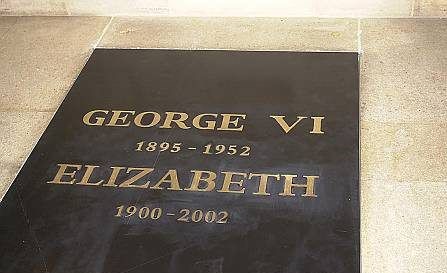
Princess Margaret also received a stone slab, which was laid against a wall. It reads: “In thankful memory of Her Royal Highness The Princess Margaret Countess of Snowdon, Born August 21st 1930, Died February 9th 2002”. She also wrote her own prayer that was added to the edges of her memorial stone: “We thank thee Lord who by thy spirit doth our faith restore/ When we with worldly things commune & prayerless close our door/ We lose our precious gift divine to worship and adore/ Then thou our Saviour, fill our hearts to love thee evermore.”
Subsequent memorials to the late Queen Mother and the late Princess Margaret were held over the ensuing 20 years, but the King George VI Memorial Chapel once again was left in solitude until just over 20 years later, when the final two members of King George VI’s immediate family came to rest with him.
On 9 April 2021, Prince Philip, the Duke of Edinburgh, died at the age of 99 following a long period of poor health. He’d made requests that his funeral be one of minimal fuss, and was granted a royal ceremonial funeral instead of a state funeral. Given the COVID-19 pandemic restrictions in place at the time, his funeral, held at St George’s Chapel, was minimised further.
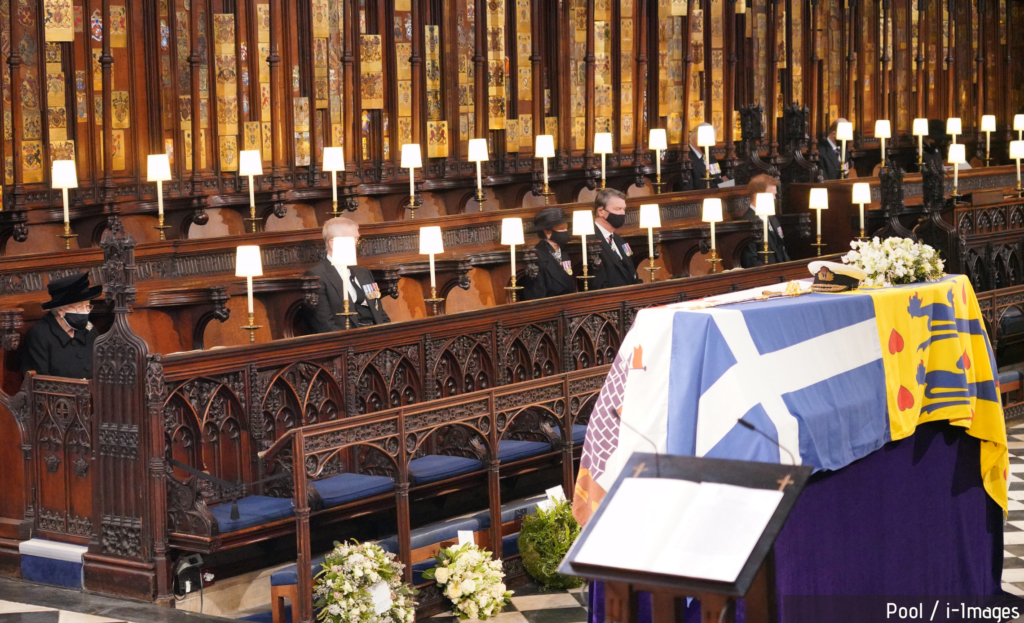
He was laid to rest following a muted funeral ceremony on 17 April, and his coffin placed in the royal vault to wait for his wife.
On 8 September 2022, Queen Elizabeth II, the longest-reigning monarch in British history, passed away following a brief illness. Her funeral was conducted at Westminster Abbey on 19 September and was one of the world’s largest gatherings of heads-of-state and dignitaries in modern times.
Later that day, she was committed to the royal vault in a ceremony at St George’s Chapel. In a private ceremony at the end of the day, in the presence of her closest family members, she was moved to the King George VI Memorial Chapel—as was the remains of her late husband—and the two were buried next to her father and mother. The space is now also known as the tomb of Queen Elizabeth II.
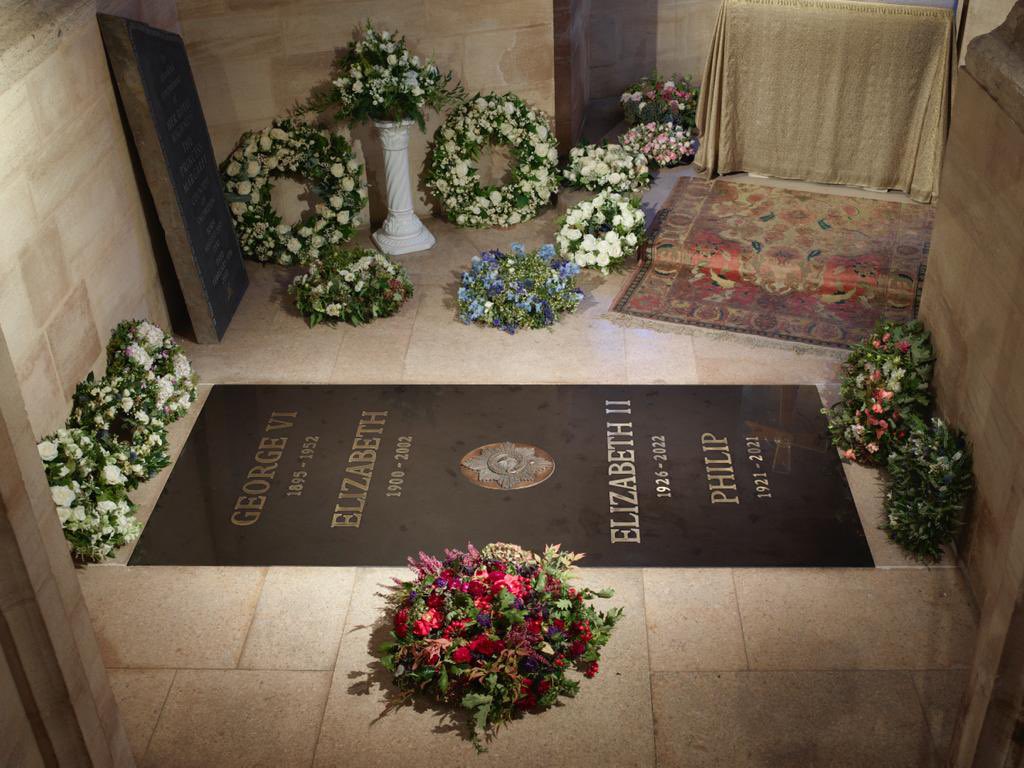
The stone slab that had for two decades simply bore the names George VI and Elizabeth was updated immediately afterward. It now reads GEORGE VI 1895-1952 / ELIZABETH 1900-2002 and ELIZABETH II 1926-2022 / PHILIP 1921-2021 with the monarchs’ names separated by a Garter Star.
Given how narrow the space is, and the fact that Princess Margaret required cremation in order to fit into the space, it remains to be seen if King Charles III and Queen Camilla will also be buried in the tomb of Queen Elizabeth II or if they will need to commission their own resting place.
The Royal Family shared the first image of the updated King George VI Memorial Chapel on 24 September. The caption read: “A ledger stone has been installed at the King George VI Memorial Chapel, following the interment of Her Majesty Queen Elizabeth.”
The tomb of Queen Elizabeth II is open to the public on tours of St George’s Chapel, though visitors cannot enter the chapel space.
Tomb of Queen Elizabeth II tomb of Queen Elizabeth II tomb of Queen Elizabeth II tomb of Queen Elizabeth II tomb of Queen Elizabeth II tomb of Queen Elizabeth II tomb of Queen Elizabeth II tomb of Queen Elizabeth II

